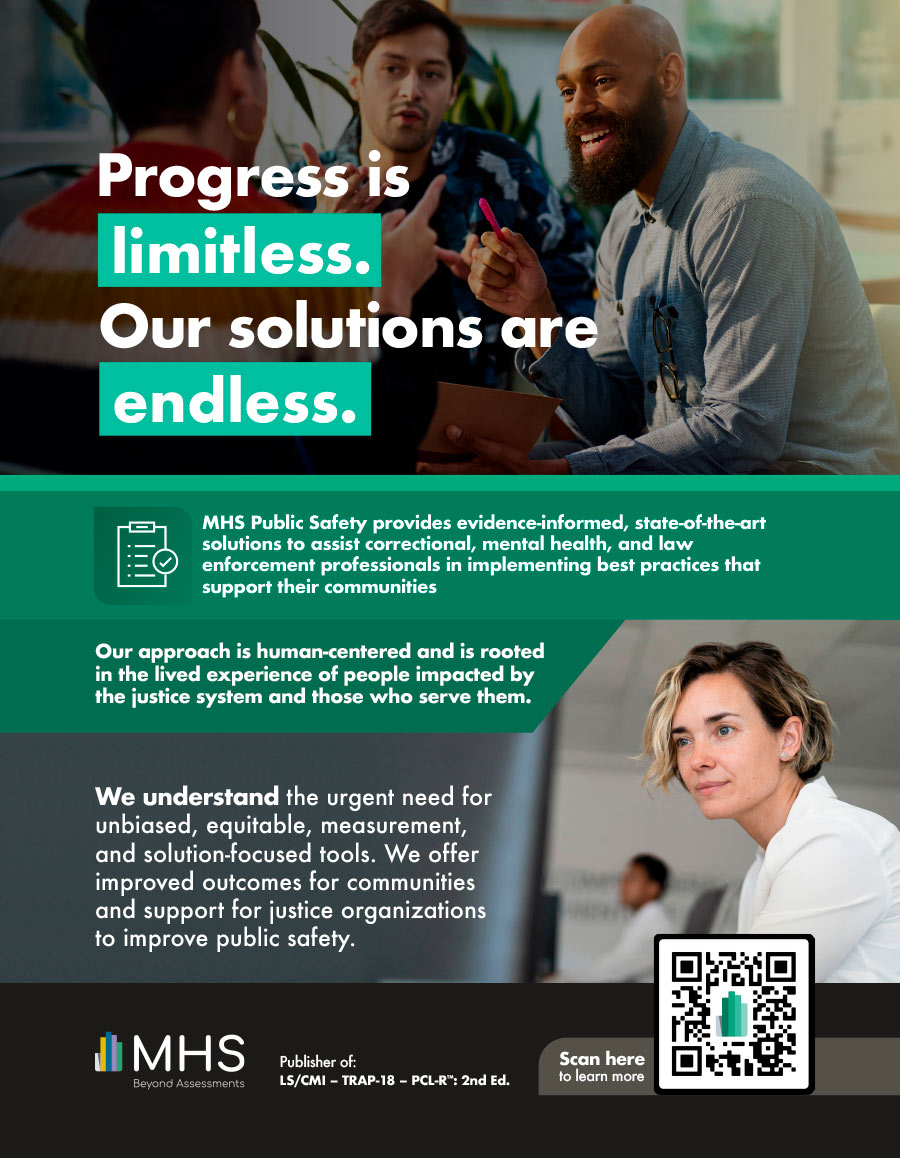Article
James M. Lant
Many public safety organizations worldwide use Offender Management Systems (OMSs) to access public and private data, including arrest events, custody data, dispositions, and prosecutor data. Keeping communities safe and providing positive outcomes requires probation and parole officers to access the histories of those within the system.
An OMS is designed to store data about an individual’s entire history, from the initial intake and classification, through parole or probation. Also usually included is in-depth information about the length of time served and any institution transfers over time. These systems may also include other data that can be helpful for corrections, such as financial records, personal histories, and case management documentation. The use of this technology enables officers to achieve positive results and reduce the potential for crime.
These OMSs usually offer a wide range of features to make tracking and managing those who have offended easier, such as streamlined communication through inmate calling, jail, and court management systems. Offender management activity documentation is required from those responsible for these activities, and data from an OMS is commonly used to make decisions regarding how best to manage an individual.
Integrated OMSs provide communities with a cross-agency response to crime and possible recidivists who may put local communities at risk. With OMSs, partner criminal justice agencies can identify individuals in the system and adequately cooperate.
A new way forward through integrating risk/needs assessments into your OMS
For decades, public safety agencies have been patching and adapting old technology that was originally implemented decades earlier. These “legacy systems” are often outdated yet must be maintained to support the vital functionalities of corrections organizations.
While these systems may technically meet the minimum requirements they were designed for, they may be so out of date or disconnected from cross-functional processes, they create a hindrance to those using these systems in doing their job effectively. Demands have continued to grow in recent years for public safety organizations to improve security, offer better programming and treatment for individuals, and better report information.
Most OMS integrations lack a risk/needs assessment component, which is a major problem.
For example, MHS’ Level of Service Risk/Needs assessment tools (namely the LSI-R™, LS/CMI™, YLS/CMI™, YLS/CMI 2.0™) are the most well-validated risk and needs instruments in the world. They are unsurpassed in their depth and breadth of research support. Based on “What Works” and “Evidence-Based Practice”, the Level of Service tools are designed to not only measure risk, but also identify needs that can facilitate case planning regarding level of supervision, level of service, and the targeting of criminogenic needs through case monitoring, reassessment, case closure, and follow-up. This results in improved outcomes for individuals, reduced recidivism and safer communities.
Integrated assessment scoring can be used in combination with your screens or MHS’ hosted screens. This integrated scoring can also drive the output of MHS-produced profile reports. Alternatively, organizations may wish to leverage scored data to drive custom-created reports or to drive the scored data to automate outputs in their platform or third-party platforms.
Without the direct integration of these types of tools within an OMS, critical data points are either missing or not being shared. When this type of data is entered manually, multiple times, in multiple systems, the room for human error is high and the administrative burden falls to already overworked corrections officers.
Better outcomes and safer communities depend on integrating
risk/needs assessments into your OMS
Human-centered analytics allow organizations to identify and address racial, gender, and socio-economic bias and inequities. Integrating this information into an OMS allows data to be viewed from a racially sensitive lens at different decision points for example. This will enable users to identify where disparities may have existed in their historical data and enable them to create internal policies and guidelines to reduce bias identified through analysis.
MHS has made it easy to integrate our tools into your OMS and deliver efficient and effective risk/needs analysis, case planning and outcomes measurement. Our systems administration options offer flexibility to integrate risk/needs assessment with case management in a single system.

James M. Lant is the Manager of Integrations and Implementations at Multi-Health Systems Inc. James has worked in the criminal justice space for over 15 years. He has helped both youth and adult agencies adopt risk assessment and case management measures, policies, and procedures all over the world by training staff, building solutions, and developing software. James has been a Master trainer for all Level of Service tools for 6 years and has presented best practices in offender risk assessment at conferences and universities worldwide. From 2017-2021, James served as the Editor-in-Chief of the Violence and Recidivism Executive Bulletin for the Global Institute of Forensic Research (GIFR). The bulletin includes summaries of peer reviewed research articles on Offender Risk/Need assessment from 150 peer-reviewed journals and is sent to 900 subscribers each month.



